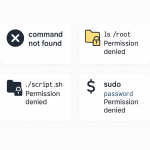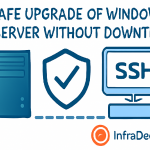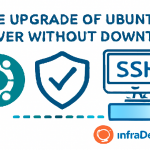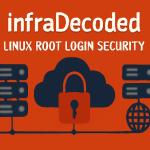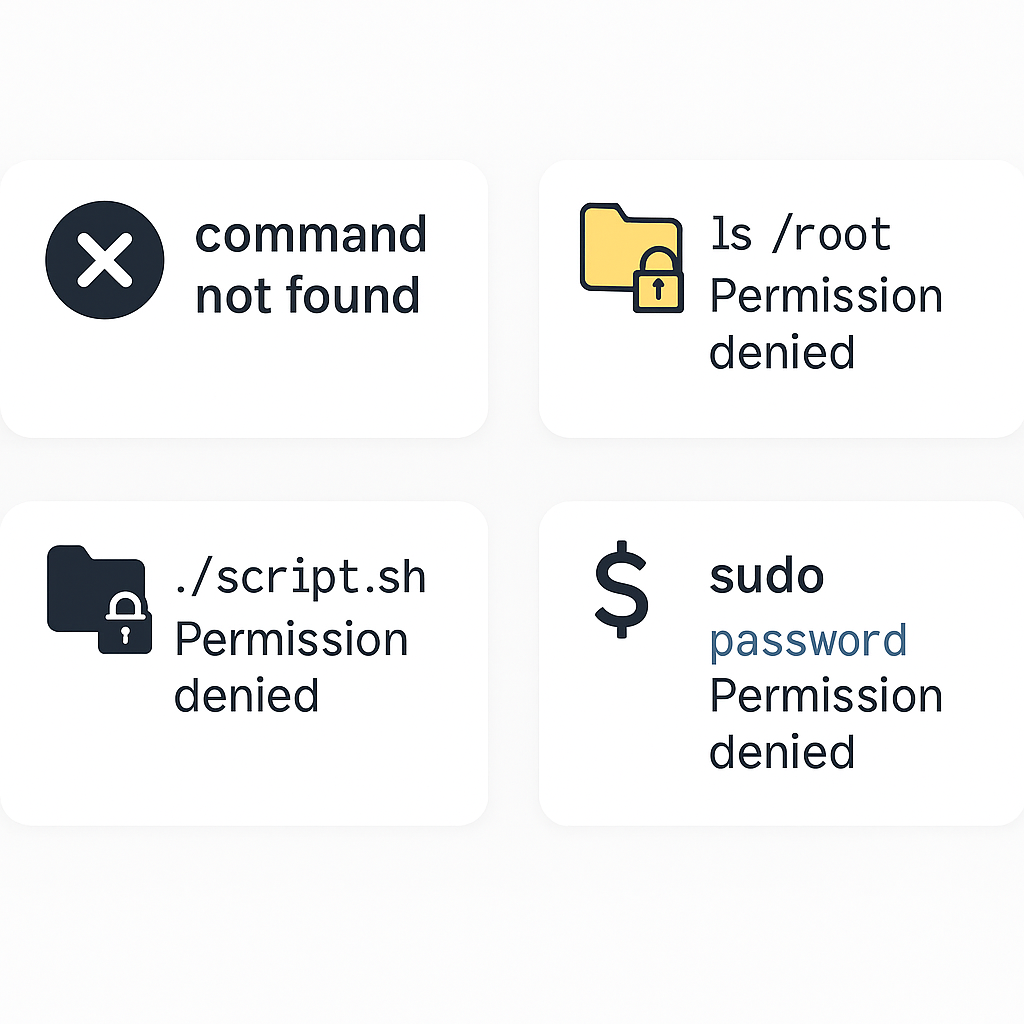
Fix Common “Permission Denied” Errors in Linux
“Permission Denied” errors are some of the most frequent obstacles for Linux users and sysadmins. Whether running scripts, installing software, or managing files, these errors occur when your user account doesn’t have the right access—or is missing execute/read/write permissions on critical files or directories.
In this guide, we’ll cover the main scenarios that trigger permission-denied errors on Linux and give you proven step-by-step fixes—with real-world commands and troubleshooting strategies.
Table of Contents
- Why Do “Permission Denied” Errors Happen?
- Common Scenarios and Causes
- Step-by-Step: Fixing Permission Denied Errors
- Advanced Troubleshooting & Tips
- Summary & Next Steps
1. Why Do “Permission Denied” Errors Happen?
- Linux permissions control who can read (r), write (w), or execute (x) files and directories. Permissions are set for the owner, a group, and “others”.
- If your user doesn’t have the right permission for an action, Linux prevents you and returns a “Permission Denied” error.
- Causes include: missing sudo, wrong ownership, missing execute bits, or trying to access root-protected files as a normal user.
2. Common Scenarios and Causes
- Running a script or binary: The file isn’t marked as executable for your user.
- Editing or moving files: You don’t own the file or lack write permissions.
- Installing or updating software: Not using
sudo, so you lack admin rights for system directories. - Accessing a shared or group directory: Directory permissions or ownership don’t include your user/group.
- Modifying files in
/etc/or other system dirs: Require sudo or root. - Ownership confusion: Files created by a process or user you aren’t part of.
3. Step-by-Step: Fixing Permission Denied Errors
-
Check Permissions on the File or Directory
ls -l /path/to/your/file
The leftmost column shows current permissions. Example:
-rw-rw-r-- 1 anmol users 532 Jul 24 backup.sh
-
Grant Execute Permission (for scripts or binaries)
chmod +x /path/to/your/script.sh
-
Grant Read/Write Permissions as Needed
chmod u+rwx /path/to/your/file
or give everyone read/write:
chmod a+rw /path/to/your/file
-
Change File/Directory Owner
(If you’re the sudo user)sudo chown youruser:yourgroup /path/to/your/file
-
Use “sudo” for Root-Protected Actions
sudo command_here
E.g., install/update software, edit system configs.
-
Edit as Root (Carefully!)
sudo nano /etc/hosts
Only use this for system files—with caution.
4. Advanced Troubleshooting & Tips
-
Recursive Permissions: Fix entire directories
chmod -R u+rwX /path/to/folder
-
Set Group Ownership (shared dirs/projects):
sudo chown -R :yourgroup /path/to/folder
- Use ls -ld /parent/directory to check if parent folders restrict access.
-
Log and Audit: Check error messages and
/var/log/for system-level denials. - Be Security-Minded: Don’t grant 777 (full access to everyone) unless you’re testing; use principle of least privilege to protect your files[1][2][4].
-
FAQs:
-
How do I fix permission denied when editing or running scripts?
Give execute access (chmod +x file) and ensure your user owns the file or run with sudo if needed[2][6]. -
Why can’t a user in the right group access a file?
All directory and file permissions in the path must allow access, not just the file itself. Confirm group permissions and usechmod g+rXandls -ldfor all parent dirs[3]. -
How to skip permission denied errors in find/ls?
find /path -name "*.log" 2>&1 | grep -v "Permission denied"
-
How do I fix permission denied when editing or running scripts?
5. Summary & Next Steps
“Permission Denied” errors in Linux are normal, but easily fixed: check permissions with ls -l, adjust with chmod or chown, and use sudo for protected system actions. Always work with care—incorrect permissions are a security risk. For more Linux troubleshooting, automation, and permission guides, explore infraDecoded.com or contact me for custom help!
Written by Anmol Ahuja, infraDecoded
Practical Linux fixes and permission management at infraDecoded.com!
